by jillnovak | Nov 2, 2014 | Nature Journaling, Reflections
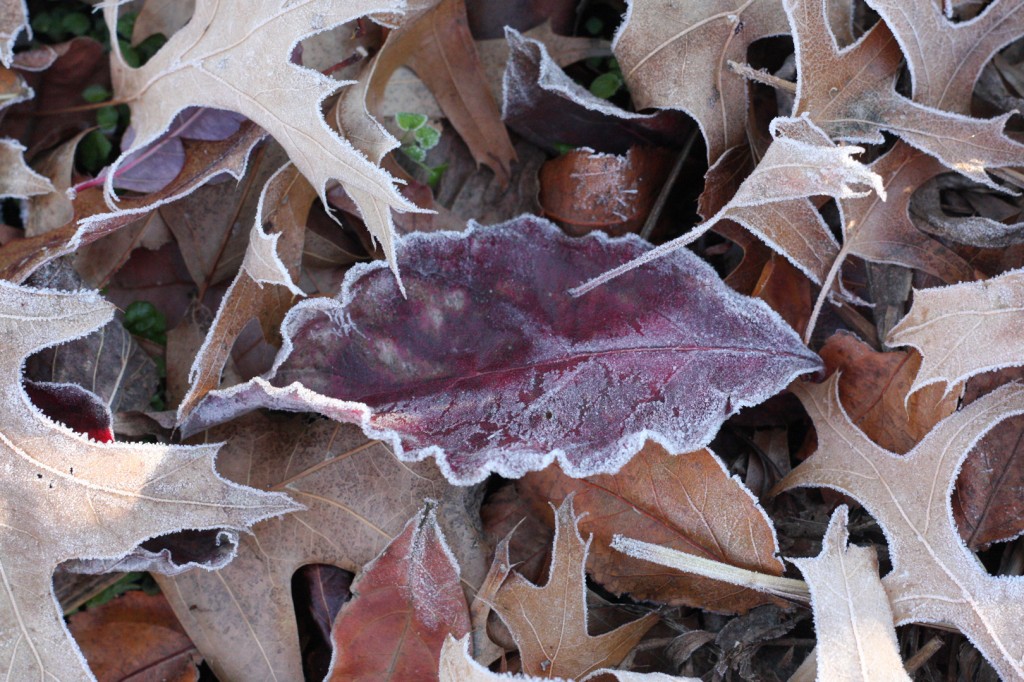
This morning, the chilled breath of winter clung to every leaf, flower, and bud. Contours once hidden from view were accentuated by the delicate tracery of tiny ice crystals.
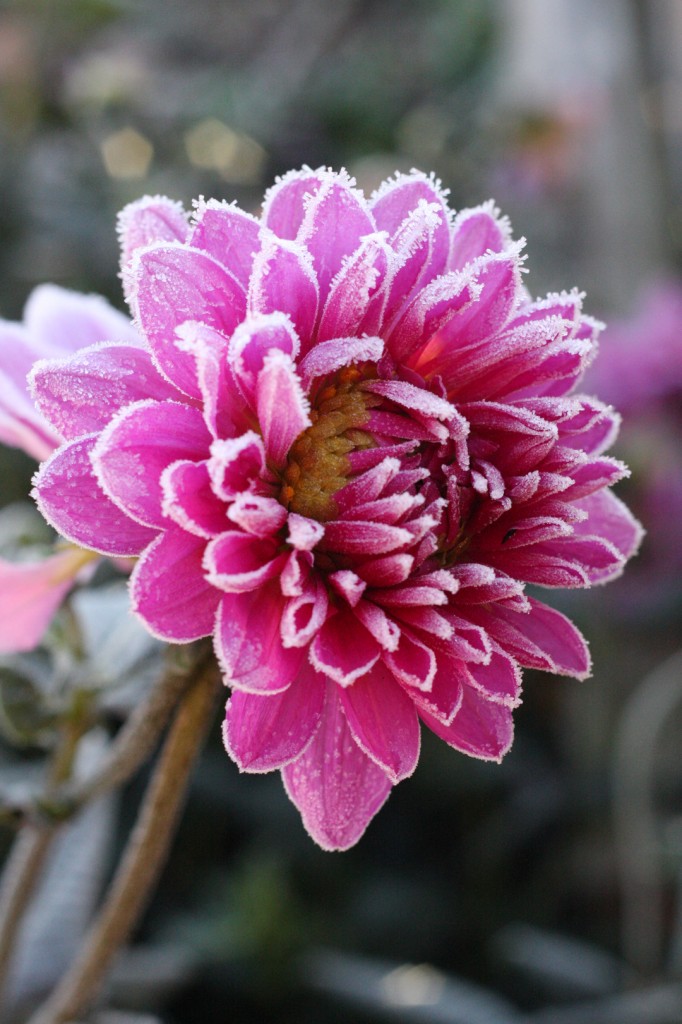
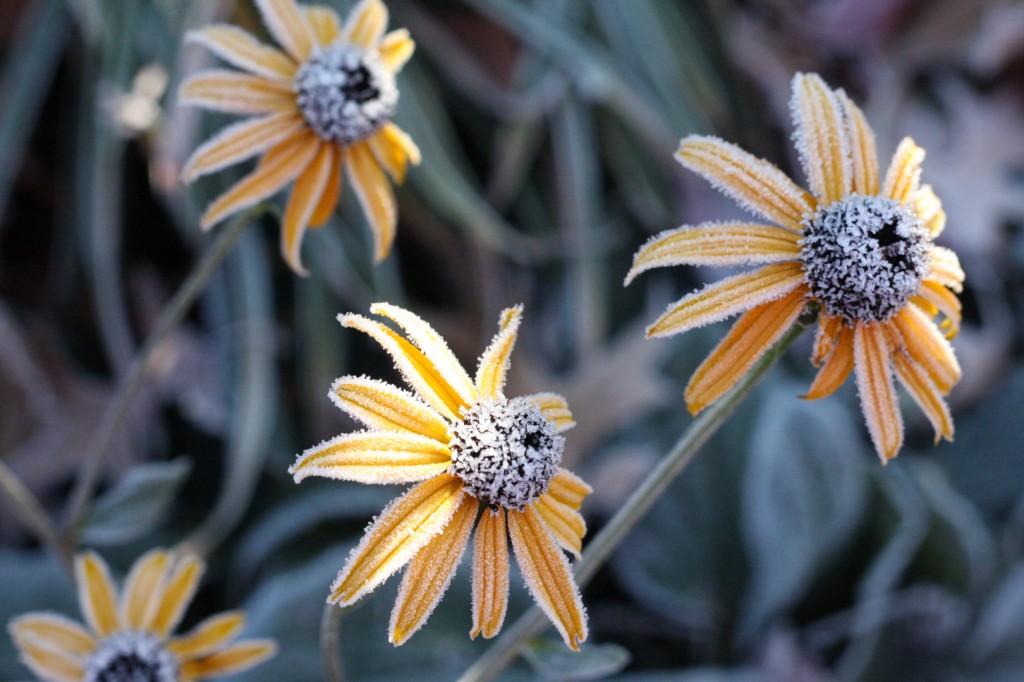
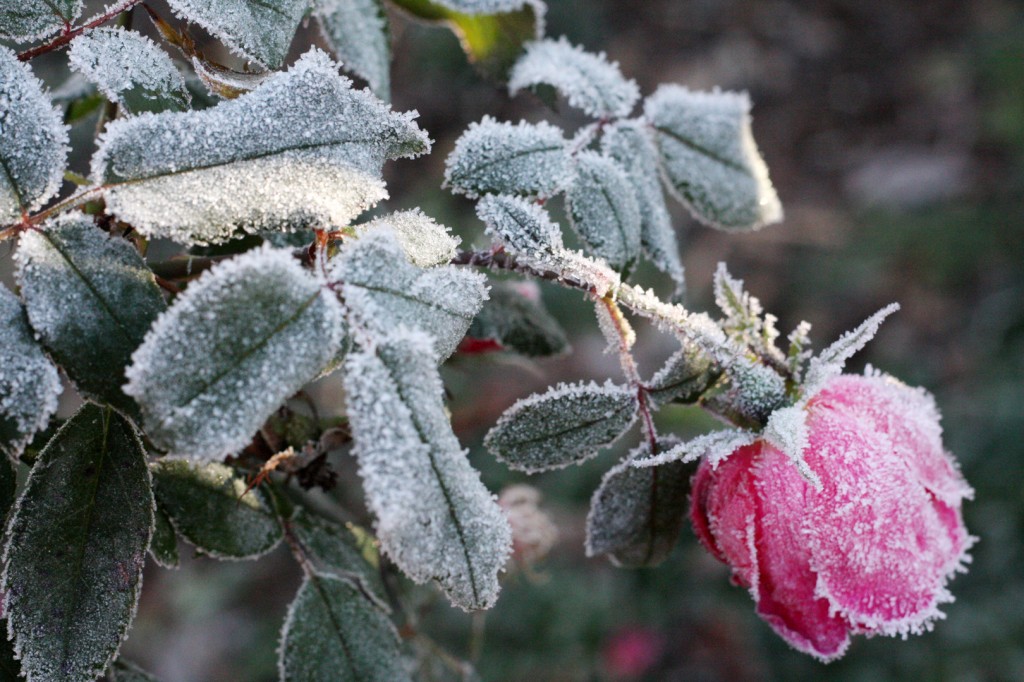
The last dahlia, the last of the black-eyed susans, and the last rose of summer competed for best of show, but I could not award the prize. All were strikingly beautiful, all were brave and bold as they tried to hold the line against the frosty sword of cold and the first scatterings of snow.
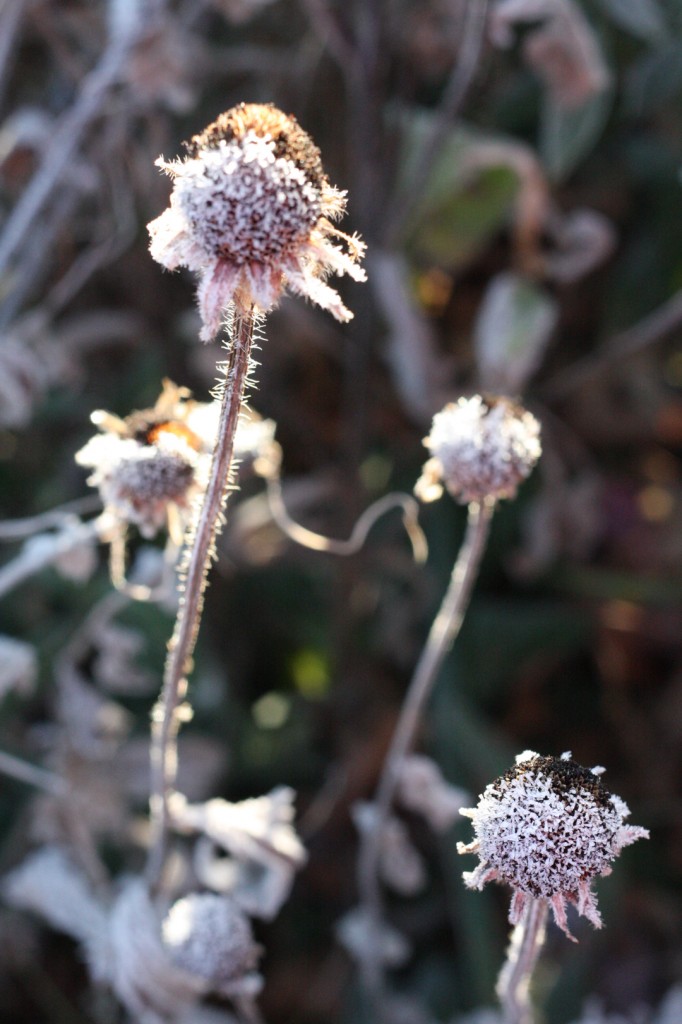
Coated in a blanket of hoarfrost, the dull brown landscape glowed. And as the sun grew higher in the sky, the fairyland melted into droplets of dew until it evaporated into thin air, just as surely as it had come, even by the hand of God.
“He gives snow like wool;
He scatters the frost like ashes.”
Psalm 147:16
by jillnovak | Jun 24, 2013 | Nature Journaling, Reflections
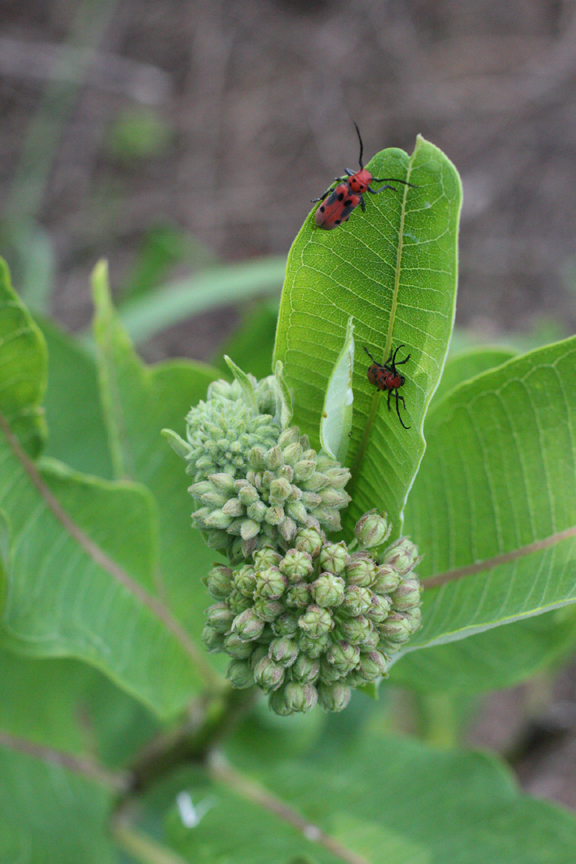
I love the gardens the Lord grows—uncultivated fields containing a variety of wildflowers, grasses, and insects, not usually seen in everyday vegetable plots or flowerbeds. Years ago, when we lived on a farm in Northern Illinois, we had a big garden that was surrounded on two sides by alfalfa fields. Because of the close proximity, we ended up with a small strip on the north side that could best be described as “wild.” It was filled to overflowing with milkweed, red clover, Queen Anne’s Lace, sunflowers (from a previous sunflower house project), and Daisy Fleabane (a plant related to the Shasta Daisy with much smaller flowers).Wildflowers thrived in our garden, and the only cultivation needed was an occasional yanking—roots and all—of an invasive goldenrod that would have completely taken over if left to its own devices.
One fall, a single milkweed seed dispersed from a weather-beaten pod took hold in what was my husband’s strawberry bed. I have loved milkweed ever since I was a little girl, so I wasn’t about to evict a lone straggler. But three years later, that single plant gave birth to more than 60 offspring—all in very close quarters! It was an impressive habitat, and I was fascinated with the insect life that the milkweed supported.
One of the most interesting things I observed about milkweed is the way the large pink composite flowers bloom in succession rather than simultaneously. As the stalks grow taller, the composite flowers open— one after another— over a period of five weeks or so. This abundant food source not only offers nourishment for adult insects, but developing young as well.
I nicknamed my milkweed “The Prairie Lilac.” When friends approached our garden patch, they were surprised to smell a fragrance similar to that of lilacs. The scent is heavenly and it’s no surprise that it attracts a wide variety of insects. My husband commented that he never knew milkweed smelled so good. I believe that’s probably true for most people.
By mid-June ants could be seen trying to sip nectar from the tight-fisted blossoms before the florets even opened. Soon they were joined by bright red milkweed beetles searching for mates. Honey bees performed a tap dance of sorts, gingerly pulling their legs off the sticky flowers as they, too, drank deeply of the succulent nectar. We also saw milkweed bugs, yellow and black swallowtails, a Great Spangled Fritillary (butterfly), Hummingbird moths, earwigs (they love to sleep like crowded sardines in the folds of the leaves), ladybugs (the larvae and adults), yellow jackets, bumble bees, wasps, flies, and dragonflies.
Monarch butterflies flitted and floated among the broad green leaves of the tall milkweed stalks secretively laying their eggs. It never ceases to amaze me how the tri-colored caterpillars delight the child in all of us. Whenever we found them, we would place them in ball jars and feed them fresh milkweed leaves until they underwent the miraculous change—the anticipated moment when shimmering gold chrysalises waxed transparent, revealing the newly formed butterflies within. After their wings hardened, we released them on the summer breeze to soar high above our beloved milkweed patch—far beyond the border of our state—southward across unfamiliar territory over hundreds of miles of rough terrain to their wintering grounds in Mexico. Seeing them fly skyward caused me to contemplate the journey of life, and the beauty of a changed soul.
“For I am crucified with Christ: nevertheless I live; yet not I, but Christ liveth in me: and the life which I now live in the flesh I live by the faith of the Son of God, who loved me, and gave himself for me..”~Galatians 2:20
Yes, metamorphosis is the symbol of the Christian life—a journey across uncharted territory, over miles of rough terrain, through life’s circumstances—the chrysalis of God’s transforming power. And just as milkweed flowers bloom in succession, so too our hearts are changed, not in an instant, but over time as we look to our Creator for our spiritual sustenance and the miracle of old things made new.

by jillnovak | Aug 8, 2008 | Gardening, Nature Journaling, Reflections
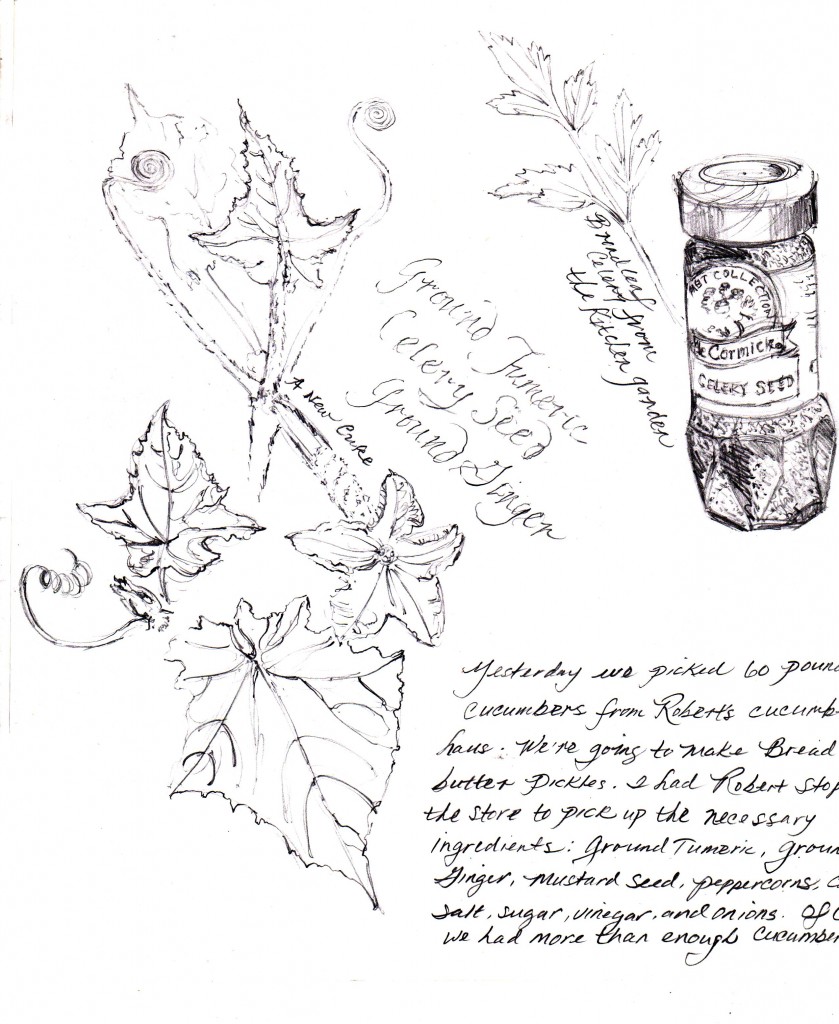 There are about five weeks of summer left, and I’m doing all I can to make it last. After a long string of hot days, I’m spending mornings up in the garden again, sipping coffee and reading my Bible under the shade of a walnut tree that’s next to my husband’s Cucumber Haus.” The roof, constructed of nylon netting, is now covered with curly tendrils fingering their way skyward, while the creeping vines around the base spill over into the path.
There are about five weeks of summer left, and I’m doing all I can to make it last. After a long string of hot days, I’m spending mornings up in the garden again, sipping coffee and reading my Bible under the shade of a walnut tree that’s next to my husband’s Cucumber Haus.” The roof, constructed of nylon netting, is now covered with curly tendrils fingering their way skyward, while the creeping vines around the base spill over into the path.
When I step inside the wooden frame, I am surrounded by a canopy of fuzzy green leaves and delicate yellow flowers. The air is cool and delicious, and I feel like a child again, exploring a secret garden. I love picking the prickly cucumbers and listening to the bees buzz from blossom to blossom.
The “Cucumber Haus” has become a spiritual dwelling place, a temporary tabernacle. But its glory is short-lived. Come fall, the frost will strike with a vengeance, shriveling the life-giving vines to the ground. Still, the memory of this year’s harvest will be permanently fixed upon my heart.
Years ago, I began making pickles out of necessity because I married an over-zealous vegetable gardener. I didn’t learn the art of canning from my mother, however. Even though she loved to garden (she planted a salad garden every year), she was overly cautious about germs, and afraid of botulism. So it’s no surprise that she asked a woman at a local grocery store how to make pickles. Now mind you, my mother has been with the Lord for 19 years. I didn’t know anything about this conversation until a couple weeks ago, after I had made my first batch of pickles and posted about it on my blog.
I received an email from a home school mom related to my husband’s sister through marriage. She wondered if I was the same Jill Novak that was married to Bobby Novak (that’s what Robert’s family calls him). After I let her know that, yes, indeed, I was “Bobby’s wife,” she wrote back saying, “I was reading your blog and I knew that you were the Jill I know. The Lord used your mom to change our family’s life. She witnessed to my mom in the produce section of the Eagle grocery store in Mundelein in 1979. She asked about making pickles. I remember what a prayer warrior your mom was! As a result of that my mother accepted Christ, and through a series of events, my husband and I did also. Your mom used to say we were “shoe-string” relatives! We have been homeschooling since 1989, and have been blessed with 8 kids ranging from 25 to 6.”
When I close my eyes, I can just imagine my gregarious mother striking up a conversation about making pickles with a total stranger in the grocery store. I can hear the woman assuring her that there is really nothing to worry about if you follow the simple instructions. I can see my mother’s face aglow with the thought of making her own pickles, and before you know it, she is sharing her faith about a personal relationship with the Lord Jesus Christ. She makes Him so appealing, so appetizing, that this woman accepts Him as her Savior right then and there in the produce isle. The two women exchange recipes that day – one for Kosher Dills and the other for Eternal Life.
I’ll never know how many people my mother led to the Lord in her lifetime through normal, everyday conversations about things like making pickles. She didn’t go out of her way to evangelize the world; she just bloomed where she was planted. People tend to laugh at me, too, because I have a way of telling my life story and sharing my faith with total strangers (especially at garage sales). That’s why hearing this story about my mother, 27 years after the fact, moved me to tears. The older I get, the more I miss her, and after all these years, the Lord confirmed something I already suspected – I truly am my mother’s daughter.
Well, this is the fourth time that I’m harvesting cucumbers this season. As I pick, slice, and can pickles, I’m passing down recipes to my own children: the joy of growing a garden, the sweet and spicy smell of pickles simmering on the stove, and the appetizing aroma of a relationship with the Living God, the recipe for Eternal Life. The memories I make now will be permanently fixed upon their hearts, and I will be remembered, like my mother before me, as a woman who nurtured her children’s souls, and reaped an abundant harvest – a winsome evangelism at best!
by jillnovak | Jun 22, 2007 | Nature Journaling, Reflections
An apple tree bloomed near the hedgerow last week. “Mom, you have to go up and see the apple tree!” Elizabeth exclaimed. “It’s all full of blossoms.” This same tree didn’t produce apples last year (a late frost nipped the life out of it), but this year the dark pink buds grew pale and slowly opened into paper-thin petals of white. As their light, sweet scent filled the air, I became spellbound. Sitting under the white and green branches, I pondered the short life of apple blossoms, only to realize that I cannot fully comprehend their fleeting beauty or the hand of the One who created such an exquisite tree. Some thoughts are too big for me.
If it remains cool and the blossoms linger, I will take my children to visit our apple tree friend often, to sit under its fragrant bower and contemplate the wonder of spring. We will memorize its splendor and revel in the sight and smell of hundreds of tender apple blossoms lifted to the sky. We will celebrate with cups of apple cinnamon spice tea and old-fashioned sour cream apple cake – our humble offering for the intrinsic loveliness we find there. We will read After Apple-Picking by Robert Frost and laugh at the poet’s ability to weave a yarn about two-pointed ladders, aching feet, and restless sleep. We’ll sigh because we know our words could never compare with his. Still, we will try to capture the memory of apple blossom time in our own verse.
And when at last the paper-thin petals lie scattered upon the ground, we will gratefully remember the fellowship we shared with the tree and each other at the meadow’s edge. A place where words bloom like delicate pink buds – full of promise, heady and fragrant, reminding us that apple blossom time is not a mere dream, but comes only once, for a short time…in the spring.









